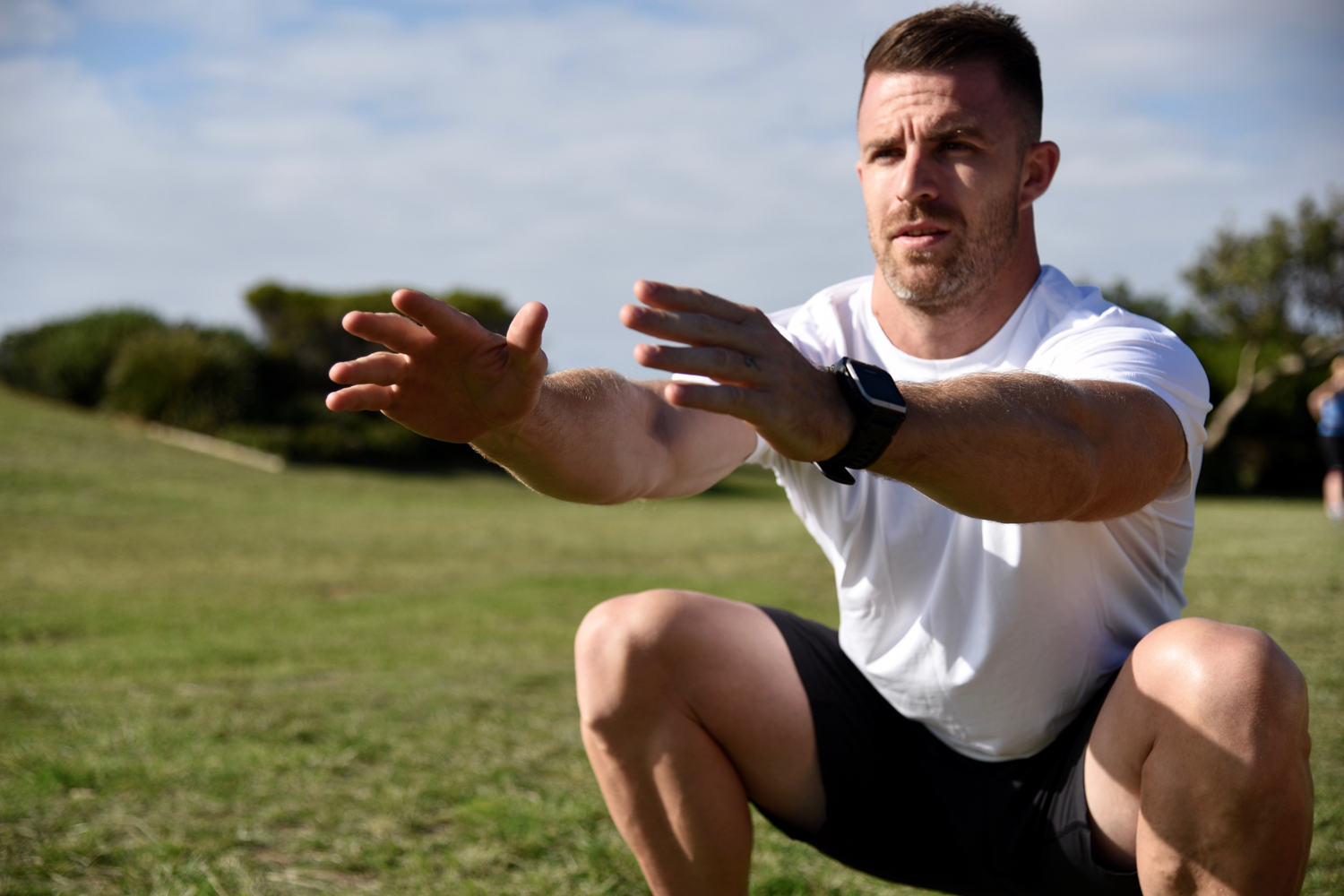
It’s one of the most underrated movements; the humble squat. We squat from the moment we learn to walk. Standing upright and moving the body to balance on two legs is the first part in learning to hold bodyweight, and counter balance through each leg.
We squat when we drive, sit down for a meeting, use the restroom, go to dinner… it’s part of life to sit, and therefore squat.
With so much integration into the movements of our every day life, we have to nail the basics to keep the bones and joints in the correct alignment so that muscles are being used properly, and abnormal wearing of joint surfaces is decreased.
Simple cues from squatting properly are extremely transferable, and important to maintain a good posture (such as shoulders back, sit upright, feet flat on the floor when we are sitting).
Sure, squats help to build your leg muscles which include, quadriceps, hamstrings, and calves, but the benefits go beyond building your pins.
A squat is a compound, full body exercise that trains primarily the muscles of the thighs, hips and buttocks, quads, hamstrings, as well as strengthening the bones, ligaments and insertion of the tendons throughout the lower body. However the squatting movement also creates an anabolic environment, which promotes body-wide muscle building. During an anabolic state, tissues found within the human body obtain energy for growth and maintenance, meaning squats can help you improve both your upper and lower body strength.
It’s for this reason that squats are essential in overall functional fitness and you’d be wise to include them in workouts to encourage total body workout and building strength in functional movement.
To enable muscle growth and strength development in simple terms, add a tempo to your squat. What does this mean? Time the eccentric and concentric phases of the movement (the up and down phases). A 3-0-1-0 tempo makes sense on lifts that start with an eccentric, or lowering phase, like a squat, with each number lining up to the seconds spent on each phase of the movement.
This means that you lower the bar for 3 seconds (3), there’s no pause at the midpoint or bottom (0), and then you return to the starting position for 1 second (1) with no break between reps (0).
E.g. 4 x 8-10 squats at 3010 tempo with a 60 second rest between sets.
Small stabilization muscles all start to fire toward the bottom of your squat, maintain your strong body position (even with no weight on your back). Your core gets a pretty hefty workout as well using well timed tempo reps, as you have to activate and control both eccentric and concentric phases during tempo squats.
So how do we squat correctly? Follow these important cues and you can’t go wrong.




















